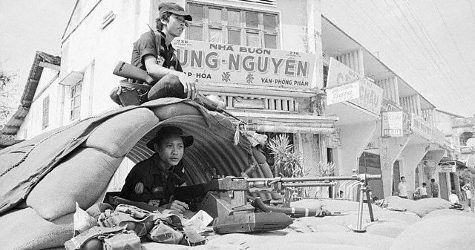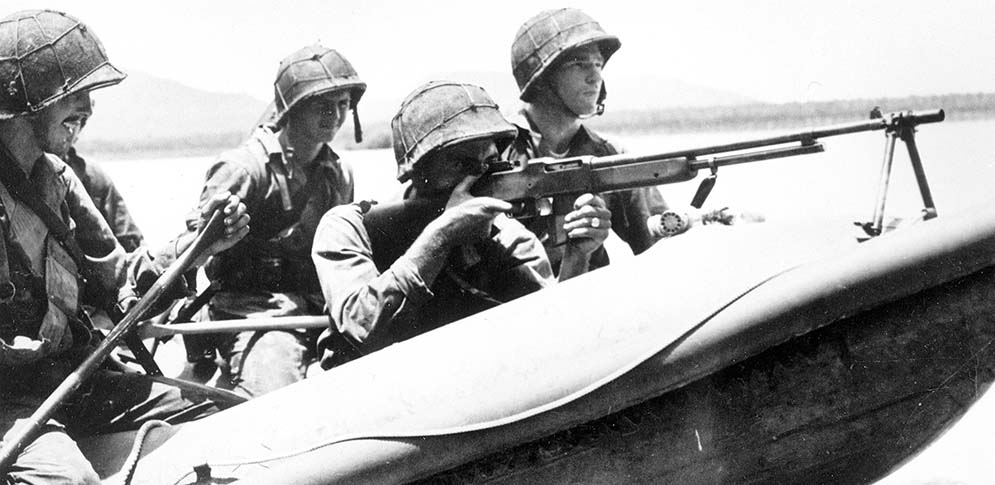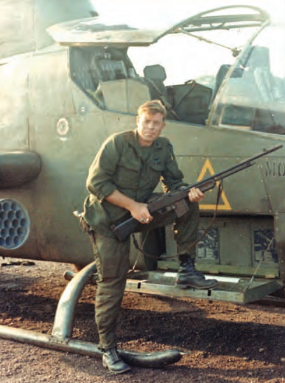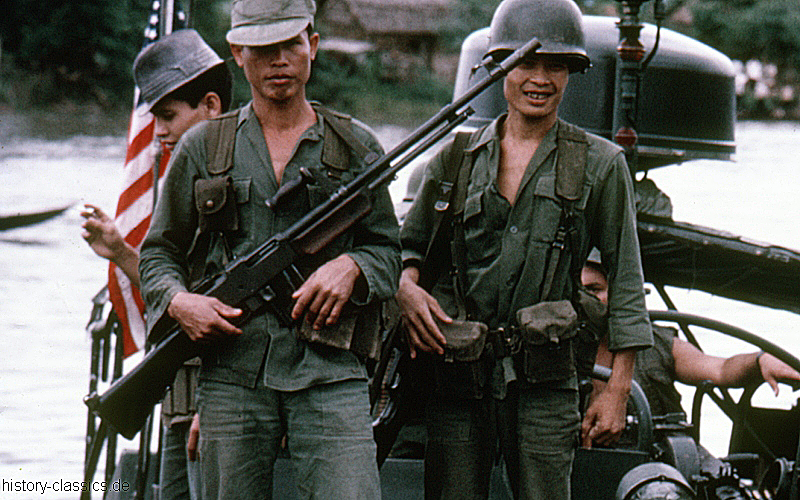M1918A2 BAR
| Factions | Weapon | Icon | Classes | Ammo |
|---|---|---|---|---|
 US |
 M1918A2 BAR |
 |
20 / 80 |
| Damage Base | Headshot × | Chest × | Stomach × | Leg × | Arm × | Bayonet | Rifle Grenades | Reload Speed | |
|---|---|---|---|---|---|---|---|---|---|
| Partial | Empty | ||||||||
| 45 | ×2.45 = 110.25 | ×1.2 = 54 | ×1.15 = 51.75 | ×0.8 = 36 | ×0.7 = 31.5 | NO | NO | 2.5 Seconds | 3.4 Seconds |
| Designation | Weapon Type | Fire Modes | Fire Rate | Bullet Spread ° | Range Modifier | Muzzle Velocity | Projectile weight | Weight |
|---|---|---|---|---|---|---|---|---|
| M1918A2 BAR | Battle Rifle | FAST+SLOW | FAST 600 RPM SLOW 350 RPM |
8.87° & 2.15° ADS | 0.920" | 860 m/s | 10 g (154.3 gr) | 7.25 kg (15.98 lbs) |
| Full name | Caliber | Place of Origin | Date | Manufacturer | Barrel Length | Total Length | Weapon Script Name |
|---|---|---|---|---|---|---|---|
| Rifle, Caliber .30, Automatic, Browning, M1918A2 | 7.62x63mm | USA | 1938 | Colt Winchester Many Others |
24.0 in (610 mm) | 47.8 in (1,215 mm) | weapon_m1918 |
The Browning Automatic Rifle (BAR) is a family of American automatic rifles and machine guns used by the United States and numerous other countries during the 20th century. The primary variant of the BAR series was the M1918, chambered for the .30-06 Springfield rifle cartridge and designed by John Browning in 1917 for the American Expeditionary Forces in Europe as a replacement for the French-made Chauchat and M1909 Benét–Mercié machine guns that US forces had previously been issued.
HISTORY
Browning began to design the weapon later known as the BAR in 1910. He demonstrated the prototypes to the US military, which did not see an immediate use for the weapon until 1917.
In 1917, prior to America's entry to the war, John Browning personally brought to Washington, D.C. two types of automatic weapons for the purposes of demonstration: a water-cooled machine gun (later adopted as the M1917 Browning machine gun) and a shoulder-fired automatic rifle known then as the Browning Machine Rifle or BMR, both chambered for the standard US .30-06 Springfield (7.62×63mm) cartridge. Colt and the Ordnance Department arranged for a public demonstration of both weapons at a location in southern Washington, D.C. known as Congress Heights. There, on 27 February 1917, in front of a crowd of 300 people (including high-ranking military officials, congressmen, senators, foreign dignitaries and the press), the Army staged a live-fire demonstration which so impressed the gathered crowd, that Browning was immediately awarded a contract for the weapon and it was hastily adopted into service (the water-cooled machine gun underwent further testing).
Although the weapon did see action in late 1918 during World War I, the BAR did not become standard issue in the US Army until 1938, when it was issued to squads as a portable light machine gun. The BAR saw extensive service in both World War II and the Korean War and saw limited service in the Vietnam War. The US Army began phasing out the BAR in the 1950s, when it was intended to be replaced by a squad automatic weapon (SAW) variant of the M14, and as a result the US Army was without a portable light machine gun until the introduction of the M60 machine gun in 1957.
The final development of the M1918A2 was authorized on 30 June 1938. The FN-designed pistol grip and rate-reducer mechanism with two rates of automatic fire was shelved in favor of a rate-reducer mechanism designed by Springfield Armory, and housed in the butt stock. The Springfield Armory rate reducer also provided two selectable rates of fully automatic fire only, activated by engaging the selector toggle. Additionally, a skid-footed bipod was fitted to the muzzle end of the barrel, magazine guides were added to the front of the trigger guard, the hand guard was shortened, a heat shield was added to help the cooling process, a small separate stock rest (monopod) was included for attachment to the butt and the weapon's role was changed to that of a squad light machine gun. The BAR's rear sight scales were also modified to accommodate the newly standardized M2 ball ammunition with its lighter, flat-base bullet. The M1918A2's walnut butt stock is approximately one inch (2.5 cm) longer than the M1918 BAR's butt stock. The M1918A2's barrel was also fitted with a new flash suppressor and fully adjustable iron sights. Towards the end of the war a barrel-mounted carrying handle was added.
Because of budget limitations initial M1918A2 production consisted of conversions of older M1918 BARs (remaining in surplus) along with a limited number of M1922s and M1918A1s. After the outbreak of war, attempts to ramp up new M1918A2 production were stymied by the discovery that the World War I tooling used to produce the M1918 was either worn out or incompatible with modern production machinery. New production was first undertaken at the New England Small Arms Corp. and International Business Machines Corp. (a total of 188,380 new weapons were manufactured). In 1942 a shortage of black walnut for butt stocks and grips led to the development of a black plastic butt stock for the BAR. Composed of a mixture of Bakelite and Resinox, and impregnated with shredded fabric, the stocks were sandblasted to reduce glare. The Firestone Rubber and Latex Products Co. produced the plastic butt stock for the US Army, which was formally adopted on March 21, 1942. The M1922 machine rifle was declared obsolete in 1940, but they were used by Merrill's Marauders in Burma later in the war as a slightly lighter alternative to the M1918A2.
The M1918A2 was used in the early stages of the Vietnam War, when the US delivered a quantity of "obsolete", second-line small arms to the South Vietnamese Army and associated allies, including the Montagnard hill tribespeople of South Vietnam. US Special Forces advisors frequently chose the BAR over currently available infantry weapons. As one Special Forces sergeant declared, "Many times since my three tours of duty in Vietnam I have thanked God for ... having a BAR that actually worked, as opposed to the jamming M16 ... We had a lot of Việt Cộng infiltrators in all our [Special Forces] camps, who would steal weapons every chance they got. Needless to say, the most popular weapon to steal was the venerable old BAR."
A retrospective analysis by two American historians stated that Browning Automatic Rifle related shipments had provided "serviceable weapons" yet that the generally "short and slightly built" Vietnamese men using them experienced problems given the nature of "Western standards" around physicality.
source







